| Total Population (2017): | 32,049,700 |
| Muslims: | 61.3% |
| Total Area: | 330,803 km2 (127,724 sq mi) |
| Density: | 92/km2 (238.3/sq mi) |
| Water (%): | 0.3 |
| Total GDP (PPP): | $1.068 trillion |
| Currency: | Ringgit (RM) (MYR) |
Malaysia is a secular de-facto multi-racial country, at the same time recognized by the official Islamic status. According to the 2000 census diagram, about 60.4 per cent of the Malaysian population practices Islam, 19 percent Buddhism, 9 percent Christian, 6 percent Hinduism, and 3 percent of Confucianism, Taoism, and other traditional Chinese religions, and rest embrace other beliefs, including animism, Sikhism, and Bahá'ís.
2. Turkey

| Total Population (2018): | 82,003,882 |
| Muslims: | 98% |
| Total Area: | 783,356 km2 |
| Density: | 105/km2 (271.9/sq mi) |
| Water (%): | 1.3 |
| Total GDP in 2019 (PPP): | $2.373 trillion |
| Currency: | Turkish lira (TRY) |
Islam is the largest religion in Turkey since the days of the Ottoman Empire ruled Turkey in the 1400s and more Muslims in Turkey. Now about 99.8% of Turkey's population is Muslim, Most Muslims in Turkey are Sunni with 70-80%, the rest are Alawiyyin and Shia with 20-30%. There are also followers of the Twelve Imams with 3%.
3. Oman
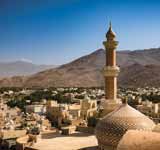
| Total Population (2016): | 4,424,762 |
| Muslims: | 85.9% |
| Total Area: | 309,500 km2 |
| Density: | 15/km2 (38.8/sq mi) |
| Water (%): | negligible |
| Total GDP in 2018 (PPP): | $198.224 billion |
| Currency: | Rial (OMR) |
The vast majority of people in Oman are Muslim. Among them, there is a 75% majority of Ibadis. Ibadism is a branch of kharidjism that was built around Adb-Allah ibn Ibad. The Shia minority lives near Al-Batinah and the Muscat coast. Within this minority are Al lawatis, Bahrainis from Bahrain, and Ajam, who probably come from Iran. There are also more orthodox Sunnis than ibadis, who are considered heretics.
4. Algeria

| Total Population (2018): | 42,200,000 |
| Muslims: | 97.9% |
| Total Area: | 2,381,741 km2 (919,595 sq mi) |
| Density: | 17/km2 |
| Water (%): | 1.1 |
| Total GDP in 2019 (PPP): | $693.109 billion |
| Currency: | Dinar (DZD) |
As 2018 estimate, 41,313,800 Muslims live in Algeria, accounting for 98.2% of the country's population. Most of the Muslims in Algeria are Sunni malikite madhhab, there are also representatives of the Hanafi madhhab in the country, mostly descendants of the Turks. There are a small number of Shiites in Kabylia, and several Ibadid communities live in the Mzab Valley. Sufi brotherhoods, though less common than in the 19th century, still have significant influence. Islam in Algeria is the state religion and regulates almost all spheres of citizens' life. There is a law punishing anyone who calls on a Muslim to renounce Islam and adopt another religion. Algerians have a tradition of Muslim patron saints. Sidi Abderrahman, the patron saint of Algeria, is perhaps the most famous of them.
5. Morocco

| Total Population (2017): | 35,740,000 |
| Muslims: | 98.9% |
| Total Area: | 710,850 km2 (274,460 sq mi) |
| Density: | 50.0/km2 (129.5/sq mi) |
| Water (%): | 0.056 (250 km2) |
| Total GDP in 2019 (PPP): | $332.358 billion |
| Currency: | Moroccan dirham (MAD) |
Unlike some Gulf countries, Morocco has a written constitution and defines itself as a Muslim country committed to openness and tolerance as evidenced by the preamble to its 2011 constitution. Moreover, although based essentially on Islamic law, Moroccan law is not derived from sharia but is the product of parliamentary legislation and royal dahirs. The religious policy of the country is also supported by the Higher Council of Ulemas, which now has only an advisory opinion.
6. United Arab Emirates

| Total Population (2018): | 9,599,353 |
| Muslims: | 76% |
| Total Area: | 83,600 km2 (32,300 sq mi) |
| Density: | 99/km2 (256.4/sq mi) |
| Water (%): | negligible |
| Total GDP in 2019 (PPP): | $732.861 billion |
| Currency: | UAE dirham (AED) |
In UAE, in the total population, official statistics indicate 96% of Muslims, 80% of whom are Sunnis and 16% are Shiites. However, 80% of the population is foreign. Foreign residents come mainly from South and Southeast Asia and to a lesser extent from the Middle East, Europe, Central Asia and North America. A census of all the resident population indicates 76% of Muslims, 9% of Christians, 5% of Hindus, 5% of Buddhists, and 5% of other religions like Parsis, Bahais and Sikhs.
7. Saudi Arabia
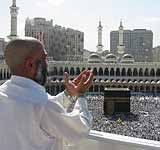
| Total Population (2018): | 33,000,000 |
| Muslims: | 97.1% |
| Total Area: | 2,149,690 km2 (830,000 sq mi) |
| Density: | 15/km2 (38.8/sq mi) |
| Water (%): | 0.7 |
| Total GDP in 2019 (PPP): | $1.845 trillion |
| Currency: | Saudi riyal (SR) (SAR) |
Most of the population of Saudi Arabia is a Sunni Muslim. About 15% of residents are Shi'ite Muslims, most of whom live in Syarqiyah (Eastern Province), with the greatest concentrations in Qatif, Al-Ahsa, and Dammam, a large concentration found in Najran, next to a small minority in Medina. Islam in Saudi Arabia is an established religion, and as an institution that is like receiving government support. The Saudi Arabian Non-Muslim population is predominantly found in the population of foreign workers. Saudi Arabia has an estimated overseas population of 8 million, most of whom are Muslims.
8. Qatar

| Total Population (2017): | 2,641,669 |
| Muslims: | 67.7% |
| Total Area: | 11,581 km2 (4,471 sq mi) |
| Density: | 176/km2 (455.8/sq mi) |
| Water (%): | 0.8 |
| Total GDP in 2018 (PPP): | $357.338 billion |
| Currency: | Riyal (QAR) |
Qatar is a predominantly Muslim country where Islam is the religion of the state. As of 2010 estimation, Muslims constitute about 68% of the population of Qatar, while Christians constitute 13% and the rest follow other religions. There are also a large proportion of foreign workers from countries such as Bangladesh, Philippines, Indonesia and others. It is expected that Muslims came in the seventh century AD in a series to spread the religion of Islam among the Arab pagans.
9. Brunei

| Total Population (2015): | 417,200 |
| Muslims: | 67% |
| Total Area: | 5,765 km2 (2,226 sq mi) |
| Density: | 72.11/km2 (186.8/sq mi) |
| Water (%): | 8.6 |
| Total GDP in 2018 (PPP): | $35.456 billion |
| Currency: | Brunei dollar (BND) |
Brunei Darussalam is a royal country with a majority of the population being Muslim. The country is located in the northern part of the island of Borneo and borders with Malaysia. Based on statistical data, on July 2015 estimate, the population of Brunei Darussalam is only 417,200 people. About 67 percent of the total population is Muslim, Buddha is 13 percent, Christian is 10 percent, and other beliefs are around 10 percent.
10. Lebanon

| Total Population (2016): | 6,006,668 |
| Muslims: | 54% |
| Total Area: | 10,452 km2 (4,036 sq mi) |
| Density: | 560/km2 (1,450.4/sq mi) |
| Water (%): | 1.8 |
| Total GDP in 2019 (PPP): | $94 billion |
| Currency: | Lebanese pound (LBP) |
The Muslims of Lebanon account for more than half of the population. It is the country of the Middle East where they constitute the least important proportion after the State of Israel. The Muslims represent 54% of the total population of Lebanon, where 40.5% are Christians and 5.5% Druze. Some argue more important figures, up to 65% of Muslims compared to 35% of Christians. These figures are to be taken with care, they vary according to their sources and are at the heart of political problems in Lebanon, because of the confessionalist political system, an increased demographic importance for a community being an argument for a greater political role.
11. Pakistan
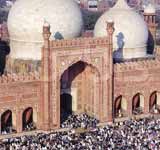
| Total Population (2017): | 212,742,631 |
| Muslims: | 96.0% |
| Total Area: | 881,913 km2 (340,509 sq mi) |
| Density: | 244.4/km2 (633.0/sq mi) |
| Water (%): | 2.86 |
| Total GDP in 2019 (PPP): | $1.195 trillion |
| Currency: | Pakistani rupee (₨) (PKR) |
Islam is the state religion of Pakistan. Muslims make up about 97% of the country's population. Pakistan ranks second in the world in the number of Muslims, after Indonesia. 91% of Pakistanis are Sunni, 5% are Shiites. Islam penetrated northwestern India during the Arab conquest. The population of the Indus Valley (modern Pakistan) fully adopted Islam in the 9th-11th centuries. At that time, Islam had not yet touched the population of the Indian subcontinent and the Ganges valleys, although the coastal population became acquainted with Islam through Arab merchants. The influence of Islam was insignificant until 1001, when Mahmud Ghazni raided the subcontinent, destroyed the center of Somnath Buddhism and seized Punjab. A new wave of Islamization from 1526 to 1858 brought with them Turkic, Persian and Mongolian who seized power in North India.
12. Indonesia

| Total Population (2016): | 261,115,456 |
| Muslims: | 87.2% |
| Total Area: | 1,904,569 km2 (735,358 sq mi) |
| Density: | 138/km2 (357.4/sq mi) |
| Water (%): | 4.85 |
| Total GDP in 2019 (PPP): | $3.495 trillion |
| Currency: | Indonesian rupiah (Rp) (IDR) |
Islam in Indonesia is the largest majority of Muslims in the world. The 2010 Population Census data showed that there were around 87.18% or 207 million people out of a total of 238 million Muslims. Although Islam is the majority, Indonesia is not a country based on Islam.
13. Bahrain

| Total Population (2016): | 1,425,171 |
| Muslims: | 70.3% |
| Total Area: | 778.3 km2 (300.5 sq mi) |
| Density: | 1,831.1/km2 (4,742.5/sq mi) |
| Water (%): | negligible |
| Total GDP in 2018 (PPP): | $75.174 billion |
| Currency: | Bahraini dinar (BHD) |
Islam is a state religion in Bahrain where almost all citizens are Muslim, with about 55% of the population being Shiite and Sunni Muslim believers make up 46%. According to the CIA World Factbook, 2001 the state census shows that 81.2% of Bahrainis are Muslims (Shiites and Sunnis), 5% are Christians, and 14% practice other Asian or Middle Eastern practices such as Hinduism. Among Muslims, Shiites make up around 55% of Bahrain's Islamic population. Hanafi Sunnis especially while Shia especially the Twelve Imams. Some Ibadi and Maliki Muslims also live on the island.
14. Jordan

| Total Population (2019): | 10,407,793 |
| Muslims: | 95% |
| Total Area: | 89,342 km2 (34,495 sq mi) |
| Density: | 114/km2 (295.3/sq mi) |
| Water (%): | 0.6 |
| Total GDP in 2018 (PPP): | $93.159 billion |
| Currency: | Jordanian dinar (JOD) |
More than 90% of Jordan's population confessed to Sunni Islam in the 1980s. Islam was not necessarily lived in an orthodox way, but devotion and identification with the Muslim faith was strong. Islam is the established religion, and so its institutions are supported by the government. The 1952 Constitution states that the king and his successors must be Muslim, and Muslim parents. Among the religious minorities, there are Christians of different faiths, some Shia Muslims, as well as some adherents to another faith.
15. Iran
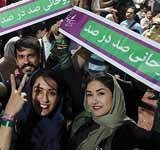
| Total Population (2018): | 81,672,300 |
| Muslims: | 99.4% |
| Total Area: | 1,648,195 km2 (636,372 sq mi) |
| Density: | 48/km2 (124.3/sq mi) |
| Water (%): | 7.07 |
| Total GDP in 2019 (PPP): | $1.627 trillion |
| Currency: | Rial (ریال) (IRR) |
Islam is the official religion in Iran. 98 percent of the total Iranian population adheres to this religion and 89 percent of the Islamic population receives Shiite teachings and another 9 percent adheres to Sunni teachings. Most of the Sunni people are Turkmen, Arab tribes, Balochi tribes and Kurds. They are concentrated in the southwest, southeast, northeast and northwest of Iran. Most Shiites are also Ithna ashariyyah. Since the captivity of the Islamic army in Persia, Islam has become the official religion in Iran except when it attacked the Mongol army and during the reign of the Ilkhanat dynasty. Iran became an Islamic republic in 1979 when new institutions which had elements of the Islamic state were passed by parliament.
16. Ivory Coast

| Total Population (2018): | 23,740,424 |
| Muslims: | 42.9% |
| Total Area: | 322,463 km2 (124,504 sq mi) |
| Density: | 63.9/km2 (165.5/sq mi) |
| Water (%): | 1.4 |
| Total GDP in 2018 (PPP): | $106.412 billion |
| Currency: | West African CFA franc (XOF) |
Christianity and Islam are practiced in a variety of forms throughout the country. The Christian missionaries arrived in the Ivorian coastline 17th century, but Catholicism began to take root at the end of the 19th century. Christian festivals and Muslim celebrations are freely organized by the faithful of these religions and recognized by all. Tolerance is the general attitude towards the practice of religion and religious communities generally coexist peacefully. This religious tolerance is also part of the practice of public authorities. Côte d'Ivoire is certainly a secular state but officials are often appointed to represent the State in religious ceremonies and some religious schools receive financial aid from the State.
17. Kuwait
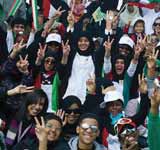
| Total Population (2018): | 4,621,638 |
| Muslims: | 74.36% |
| Total Area: | 17,818 km2 (6,880 sq mi) |
| Density: | 200.2/km2 (518.5/sq mi) |
| Water (%): | negligible |
| Total GDP in 2018 (PPP): | $303 billion |
| Currency: | Kuwaiti dinar (KWD) |
The Kuwait is a constitutional monarchy religion Muslim from the 7th century. The population of Kuwait is 85% Muslim, 60% of whom are Sunni and Malikite. The Shiites come mainly from Iran. The rest is mainly Christians of the Philippines and various countries of the Middle East.
18. Sudan

| Total Population (2016): | 39,578,828 |
| Muslims: | 97% |
| Total Area: | 1,886,068 km2 (728,215 sq mi) |
| Density: | 21.3/km2 (55.2/sq mi) |
| Water (%): | - |
| Total GDP in 2018 (PPP): | $197.825 billion |
| Currency: | Sudanese pound (SDG) |
The Sudan is a religiously mixed country, although Muslims have dominion in the nation's government institutions since independence in 1956. Statistics indicate that the Muslim population is approximately 75%, including Arab and non-Arab groups, approximately 10%, and traditionalists by 15%. Muslims in the north predominate, but there are significant Christian communities in northern cities, especially in areas where there are large numbers of internally displaced people. It is estimated that over the last forty years more than 4 million southern inhabitants have fled north to escape the war. Most citizens in the south want to adhere to Christianityor traditional indigenous religions, however, there are some Muslim adherents too, of such beliefs. The population is almost entirely Sunni Muslim, but is divided into several groups.
19. Iraq

20. Egypt

| Total Population (2017): | 94,798,827 |
| Muslims: | 95% |
| Total Area: | 1,010,408 km2 (390,121 sq mi) |
| Density: | 96/km2 (248.6/sq mi) |
| Water (%): | 0.632 |
| Total GDP in 2019 (PPP): | $1.396 trillion |
| Currency: | Egyptian pound (E£) (EGP) |
Egypt is Muslim country since the Arab invasion of 640. It has known many different Muslim dynasties, often foreign, the most fertile probably being the Fatimid dynasty, which had a great cultural influence. It is under this dynasty that the University of Al-Azhar, the highest authority of the Sunni Muslim world, is founded. Muslims are estimated at about 95% of the population. The vast majority of Muslims are Sunni, of rite Shafii and Maliki. Egypt is one of the leading countries of the Arab-Muslim civilization. It is one of the founding members of the Arab League, and is by far the most populous country. It played a major role in the revival of the Arab world in the 19th century.
21. Maldives

| Total Population (2016): | 427,756 |
| Muslims: | 98.4% |
| Total Area: | 298 km2 (115 sq mi) |
| Density: | 1,102.5/km2 (2,855.5/sq mi) |
| Water (%): | - |
| Total GDP in 2018 (PPP): | $7.396 billion |
| Currency: | Maldivian rufiyaa (MVR) |
The Islam is the state religion of the Maldives. However, due to its isolation from the historical centers of Islam in Asia and the Middle East, pre-Islamic beliefs have persisted. Clarence Maloney, an anthropologist, studied the Maldives in the 1970s. An imam explained that for many Maldivians, Islam consisted in observing ablutions, fasting and reciting incomprehensible formulas in Arabic. However, the situation has changed since the change of the Iranian revolution. In 1991, the Maldives had a total of 725 mosques and 266 female mosques.
22. Yemen
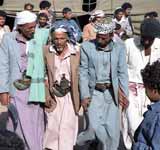
| Total Population (2017): | 28,036,829 |
| Muslims: | 99.54% |
| Total Area: | 527,968 km2 (203,850 sq mi) |
| Density: | 44.7/km2 (115.8/sq mi) |
| Water (%): | negligible |
| Total GDP in 2018 (PPP): | $73.348 billion |
| Currency: | Yemeni rial (YER) |
The Islam has been present in Yemen since the year 630 approximately. At the time when Muhammad united the Arabian Peninsula around Islam, he was introduced to the region by Ali ibn Abi Talib, who would later become the fourth caliph of Islam. Yemenis are almost all Muslims, but there is a small residual Jewish community present in Yemen since the early days of Islam. Yemen Muslims are divided between 60% to 75% of Sunni of rite Shafi'ite and 25% to 40% of Shia Zaidi. The Zaïdit of the northern plateaus have dominated the political and cultural life of North Yemen for centuries, while the Chafeites of the South and Southeast were South Yemen.
23. Mauritania
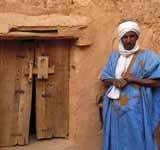
| Total Population (2016): | 4,301,018 |
| Muslims: | 99.9% |
| Total Area: | 1,030,000 km2 (400,000 sq mi) |
| Density: | 3.4/km2 (8.8/sq mi) |
| Water (%): | 0.03 |
| Total GDP in 2018 (PPP): | $18.117 billion |
| Currency: | Ouguiya (MRU) |
At the independence of 1960, Mauritania became an Islamic Republic. The 1985 constitution made Islam the state religion and sharia the law of the land. Officially, all Mauritanians are Muslim one Sunni of rite Maliki. It is believed that Mauritania is 99% Muslims. It was during the colonial period that the Sufi brotherhoods gained great influence, because of the relative peace brought to the region by the French power and the resentment of the Mauritanians against the imposed rules. Since the independence of the country, the two brotherhoods of Qadiriyya and Tidjanes gather all the Sufi Muslims of Mauritania.
24. Bangladesh

25. Kazakhstan

| Total Population (2019): | 18,448,600 |
| Muslims: | 70% |
| Total Area: | 2,724,900 km2 (1,052,100 sq mi) |
| Density: | 7/km2 (18.1/sq mi) |
| Water (%): | 1.7 |
| Total GDP in 2019 (PPP): | $534.271 billion |
| Currency: | Tenge (₸) (KZT) |
Islam in Kazakhstan is the most widespread religion among the believing population of the Republic of Kazakhstan. Muslims make up 70% of the population according to the 2009 census. The penetration of Islam into the territory of modern Kazakhstan took place over several centuries, starting from the southern regions. The first impetus to the spread of Islam, became Talas battle 751th year. At which the Turks of the Turgesh Khaganate, having united with the troops of the Abbasid Caliphate, defeated the troops of Tang China. Victory in the battle stopped the expansion of the Chinese Tang Empire to the west, and allowed Islam to establish itself among the sedentary population of Semirechye and the Syr Darya by the end of the 10th century.
26. Senegal
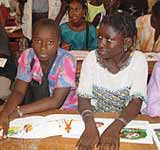
27. Sierra Leone

28. Comoros
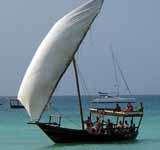
29. Kyrgyzstan
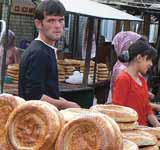
30. The Gambia
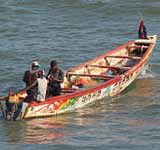
31. Burkina Faso
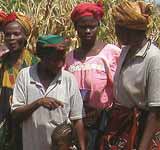
32. Cote d'Ivoire
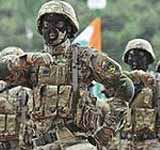
33. Mali
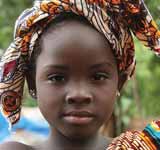
34. Turkmenistan

35. Guinea-Bissau
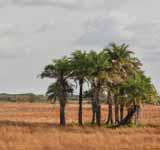
36. Chad
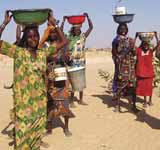
37. Tajikistan

38. Djibouti
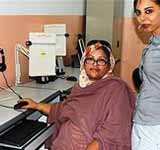
39. Azerbaijan

40. Niger

41. Kosovo

42. Benin
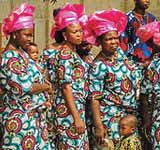
43. Uzbekistan
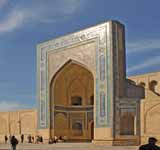
44. Guinea

45. Northern Cyprus

46. Palestine

47. Sahrawi Republic
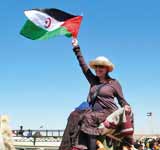
48. The Comoros

49. Albania

50. Tunisia

51. Afghanistan
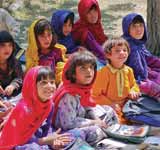
52. Libya

53. Nigeria
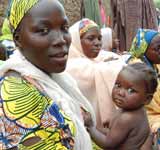
54. Bosnia-Herzegovina
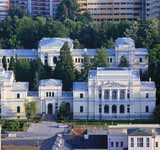
55. Somalia
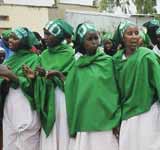
56. Syria


